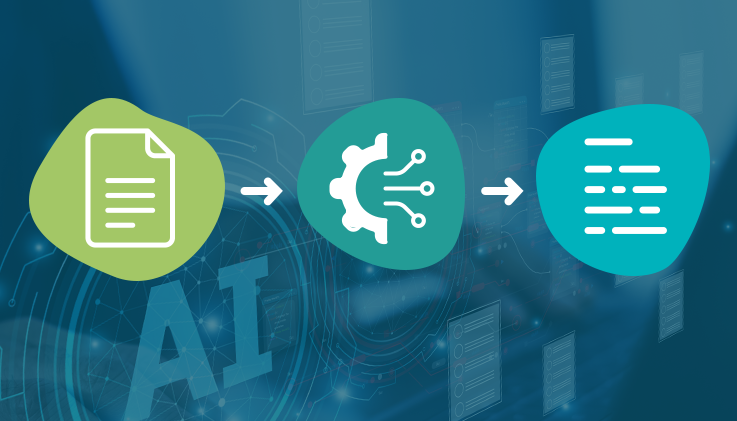How can organizations successfully deliver on the rising demands of the customer yet prevent their service teams from getting overburdened? Multichannel customer service, personalizing products/services, and digitalization have all evolved greatly—individually and together as must-have components to deliver an unparalleled experience to customers. But take a moment to consider how your brand will benefit when you offer customers the option of self-service.
Using your customers to drive personalized experiences through self-service is a wonderful way to ensure customer success without directly involving your service teams. Self-service tools optimize customer experience. Implementing conversational in your self-service channels makes the interactions between customers and your brand more meaningful, convenient, and enjoyable. Let's see how.
Self-service improves your brand experience
Having self-service systems in your product or service delivery processes means doing away with long queues of people simply waiting (and wasting valuable time) to receive something — it could be a product, a service, or even information relating to the brand. Customers, instead of wasting time waiting in queues, can serve or help themselves, thus fulfilling their objectives faster. With self-service, everyone gets what they are looking for exactly when they want it.
From an enterprise’s viewpoint, self-service systems drive collaboration and enable customers and service teams to work closely together as true partners. Empowering customers and encouraging them to opt for self-service helps brands put customer success at the heart of their strategy.
On the one hand, consumers enjoy finding solutions to their problems at their convenience, thus improving customer experience (CX). On the other hand, support teams feel relieved at not having to indulge customers with simple queries or non-serious issues. Thus improving employee experience (EX).
An excellent CX along with an excellent EX culminates to create a fantastic brand experience.
Also read: 8 Tips To Make Your Customer Service Process Economically Efficient Without Compromising On Quality
Industries that offer customers self-service solutions
Self-service has become increasingly popular in recent years as customers prefer to solve their own problems quickly and efficiently. Additionally, with the rapid development of digital technologies, customers have a more favorable view of a company if it offers self-service.
In recent times, almost every industry, in one way or another, has come under the wave of digitalization. Connected technologies and mobile applications are commonly used in industries like automobiles, banking, finance, eCommerce, education, electrical appliances, IoT devices, home automation systems, retail shopping, restaurants, utility service providers, etc. If you observe closely, for most of our day-to-day activities, there is always an alternative available online to complete them.
Completing tasks, like paying utility bills for electricity, piped gas, civic amenities, etc., can be done online or on dedicated mobile apps. Whether a customer is planning to purchase tickets for a movie or order food and drinks from their favorite restaurant, they can do everything on their mobile phone or online in the comfort of their home — without ever having to speak to any service representative. How is that possible?
Rapid digitalization has created an environment where customers prefer communicating with devices (like mobile phones, computers, and conversational self-service kiosks) more often than humans. These devices using digital technologies are primary go-to sources for customers seeking help and support and have become important components in most spheres of everyday life.
That is why it is not surprising to see almost every industry bolstering its customer self-service with digital technologies. After all, brands that offer consumers greater autonomy to accomplish their tasks with the help of digital technologies are considered ‘smart.’
Self-service systems are a big hit among customers
Providing self-service for basic issues can be a huge factor in improving your customer service efficiency. HubSpot research shows that almost 88% of customers expect brands to have an online self-service portal.
Another study by Harvard Business Review says 81% of customers attempt to take care of matters themselves before reaching out to a service representative. When you empower your customers to handle urgent and basic tasks, their satisfaction level increases.
Better service means having everybody participate in ensuring customer success. And that includes inviting your customers to take part with service teams to ensure overall success for themselves. This is where self-service plays a critical role in giving brands a leg up to ensure the ultimate experience for customers. Check out this 3-minute video on conversational self-service.
How organizations benefit by offering self-service to consumers
Here are a few benefits of including and encouraging customer self-service systems within an organization.
- Higher efficiency: Say goodbye to long queues of people, mistakes by support agents, complaining customers, and over-stressed staff. Customers get to solve simple issues using readily available tools and a detailed knowledge hub without burdening contact center agents.
- Optimizing human resources: When customers use self-service channels to fulfill their requirements instead of simple queries or problems, service teams have time and opportunity to concentrate on more complicated tasks or responsibilities.
- Easily accessible: Self-service systems are not time-bound — meaning they can be accessed by customers whenever the need arises, irrespective of the business’ operating hours or availability of customer care representatives. Not only that, but customers can also find most self-service tools in their mobile applications or online, thanks to digitalization.
- Enhanced experience: AI and augmented reality, together with an intuitive and user-friendly interface, have transformed online shopping into interactive virtual experiences for customers. Digital assistants can guide shoppers and help them with product comparison, selection, and checkout, thus improving the overall shopping experience for customers.
- Increased revenue: Most eCommerce establishments have conversation bots and digital customer assistants, which guide customers online through the purchasing process and stay with them until checkout. These AI-powered tools help minimize cart abandonment, resulting in increased revenue for the brand.
- Improves brand reputation: Organizations that offer their customers dependable and intuitive self-service with advanced automation capabilities greatly improve their brand reputation.
Also read: Knowledge Base: The Keystone Of Helpdesk Software
Different types of customer self-service channels
Any organization that hopes to positively impact clients and create memorable experiences out of their customer interactions knows that it is easier said than done. Customer experience today is all about the quality of self-service, hyper automation, conversational AI, and personalization offered by brands to their consumers.
To improve CX quality, all the aspects mentioned above have to be taken care of with great attention to detail in every customer interaction. After all, every interaction with a customer is an opportunity to build a lasting relationship and create a positive impact. When brands decide to offer self-service facilities to consumers, they should display these qualities:
- Convenience: Self-service systems should be convenient for both customers and service agents.
- Financial gains: Businesses can save a significant amount of money by investing in self-service technologies, as they can reduce the number of support teams that they need to hire and train.
- Automation: The self-service solution for customers must include advanced automation capabilities to facilitate faster task completion.
- ROI: The solution must deliver healthy ROI by predicting cart abandonment and taking proactive steps to prevent it. It should also prevent customers from churning by providing lasting solutions to simple problems.
- Quality data: All customer self-service channels must be able to capture important customer data. AI processes and analyzes this data to help personalize communication and provide custom-made solutions to customers.
Brands must remember to offer customers only those self-service options that they are familiar with. The strategies must benefit the customers first and then the business. Conversational self-service will be a success only when it is effortless for the customer. Otherwise, they will try to reach out to service representatives for help, rendering the effort to make customers self-sufficient a failure.
Empowering customers with self-service tools
Here are a few commonly used self-service channels that help brands deliver a wholesome experience to customers.
- Phone calls/IVR: Customers always appreciate brands that have self-service features built into helpdesk systems. While attempting to address an inquiry, many customers would rather not seek assistance from an agent. You can reduce your service team's workload and provide customers with more personalized attention by using self-service IVR or intelligent voice bots that can direct customers to the desired resolution.
-
Knowledge base: Customers prefer to solve problems independently instead of reaching out to service teams. A knowledge base provides customers with information on any topic related to products/services. It serves as an information management system that assists in the onboarding of new customers, guides them on how to solve common problems, and helps them in their decision-making process.
ThinkOwl’s Knowledge Base is a perfect tool to empower customers with robust self-service systems and answers to frequently asked questions. The helpdesk comes pre-configured with a knowledge base. Service team administrators can add, modify, and arrange the contents systematically. With the versioning feature, helpdesk admins can ensure the accuracy of the content. With the knowledge base, customers can search, favorite, download, filter, and bookmark resources and help themselves to quality service. - Kiosks: Consumer demands for self-service drive new opportunities across industries. With hyper-innovation becoming a mainstay for most organizations, customer self-service systems (like kiosks) have evolved to become super efficient. These self-service kiosks are fitted with robust hardware components and powered by the latest software to give end-users a rich, fulfilling experience. Most conversational self-service systems integrate intelligent software with functional UX design to ensure rewarding experiences for users.
These kiosks can be deployed hassle-free and do not need overseeing. The kiosk software development automates interactions while pushing the boundaries to provide services that live up to the end users’ expectations. Kiosks can be found at airports, banks, coffee shops, and restaurants, as well as at office buildings, hotels, and other businesses that require some form of interactive self-service.
The purpose of multimedia kiosks is to offer an interactive yet better customer experience (CX). Current market trends underline the importance of kiosks as a most sought-after technology for customer self-service, as it minimizes the scope for errors and offers convenience to users. These kiosks can do everything from self-order and self-checkout to visitor check-in or product information. -
Conversation bots: 69% of customers say they will use a bot to handle smaller issues. Conversation bots create meaningful, personalized connections with customers while delivering real outcomes for your business. Similar to Amazon’s Alexa and Apple’s Siri, conversation bots communicate with users through a real-time chat interface to provide customer service without the need for a human agent. Conversation bots can directly impact customer experience by handling multiple user queries simultaneously. They also provide prompt replies, which results in meaningful conversation, better brand engagement, and improved customer experience.
Also read: What Are Customer Touchpoints – And Why They Matter
Conclusion
Technology is changing how business is done without letting the focus shift from improving the consumer’s experience. When organizations offer self-service through their products or services, they need agile technologies that are reliable, low maintenance, can be easily deployed, and allow process workflows to be configured easily. Using cloud-based helpdesk software, like ThinkOwl, can help your brand leverage technology to better understand your customers and their needs and help you build stronger, more meaningful relationships that last a lifetime. Sign up now for a 30-day free trial.













